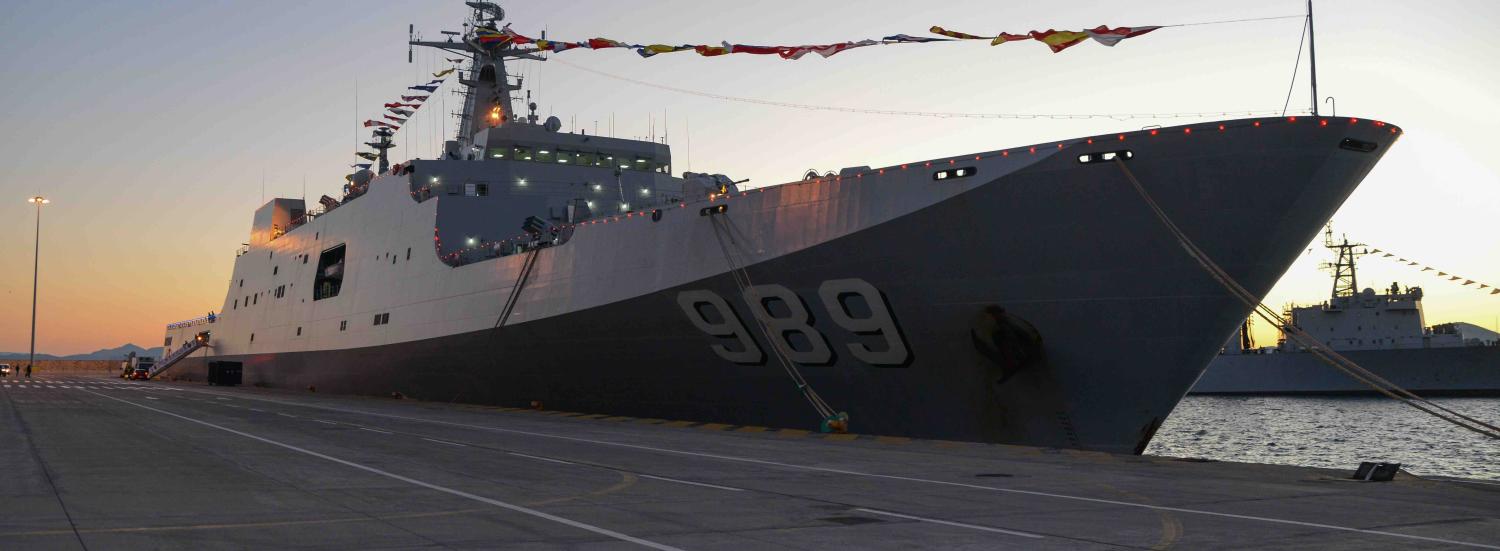China’s navy has grown dramatically over the past two decades, but with one surprising exception: its amphibious forces.
On Monday, the Australian National University’s Strategic and Defence Studies Centre published my contribution to its Centre of Gravity essay series. The paper is titled China’s New Navy: A Short Guide for Australian Policy-Makers, and describes the massive capability leaps China has made.
But the same isn’t really true of China’s ability to put troops and equipment onto land from the sea. There wasn’t space to go into the subject of amphibious forces in my paper, so here I want to suggest why the PLA Navy seems to have left a gap in its capability development.
The reason this gap is so puzzling is that reclaiming Taiwan is such an important part of the Communist Party’s identity, and a core mission for the PLA. Some analysts also argue that Taiwan is the key to China’s broader naval ambitions because it would give the PLA Navy unobstructed access to the Pacific (see Richard Fisher’s Congressional testimony at this link).
So why, in the midst of a massive modernisation drive, has the PLA Navy not built the forces to conquer Taiwan if it is ordered to? Check out this lecture from Dr Christopher Yung of the US Marine Corps University, specifically the section from 18:00 to 20:00 where he discusses this apparent anomaly. Note, when Yang refers to “LSTs” he means medium-sized ships that could cross the Taiwan Strait, beach themselves, and then disgorge a couple of hundred troops or a half-dozen tanks.
China’s shipyards have been turning out small naval vessels by the bushel in recent years; including, for example, the Type 022 missile boat and the Type 056 corvette. The kind of vessel Yang is talking about is less complex than those, so it’s not as if China lacks shipbuilding capacity.
Nor is this just a question of ships. China also hasn’t built the Marine forces required to take on a task such as invading Taiwan. In fact, the decision to expand the Marines from 20,000 to 100,000 was only announced in 2017.
It is true that China has built larger amphibious vessels, and might be building helicopter carriers similar to Australia’s Canberra class. But the Type 071 class only numbers six vessels, and both it and the mooted Type 075 are bigger than what is needed for a Taiwan scenario, so are probably intended for more distant deployments, such as to the South China Sea.
It seems, then, that China has made a deliberate choice not to build amphibious forces dedicated to retaking Taiwan. Why?
My guess is that the PLA has decided that, even with a massive amphibious fleet, retaking Taiwan by force would be incredibly costly in lives and resources. Instead, as I discuss in my Centre of Gravity paper, China has made efforts over the past 20 years to improve all aspects of its anti-ship capability, in order to make it increasingly difficult for the US and its allies to operate near China’s shores.
Of course, other countries can adopt the same strategy (in fact, my paper recommends that Australia take a leaf from China’s book), and Taiwan could make it really hard for Chinese forces to cross the Strait at an acceptable cost (think the opening scene of Saving Private Ryan).
Rather than build a force to undertake such an expensive mission, China has chosen to focus on its strengths. Again, China has become really good at attacking enemy ships, so one thing it could do to coerce Taiwan is to isolate it by preventing US naval forces coming to Taiwan’s aid.
China also has strong ballitic-missile forces and an air force that far outnumbers Taiwan’s and can match it for quality. These capabilities could be used to coerce Taiwan into meeting Beijing’s demands, rather than physically invading it.
There’s a risk, of course, that Taiwan would resist such coercion and China could find itself in a protracted campaign, but that’s a risk in an invasion scenario too.
My Centre of Gravity paper argues that in modern naval warfare, defence is easier and cheaper than offense. China has used this to its advantage, but if it ever wanted to subdue Taiwan, it would find itself on the other side of that equation.
The fact that China has chosen not to build an amphibious invasion force suggests it has learnt this lesson.

